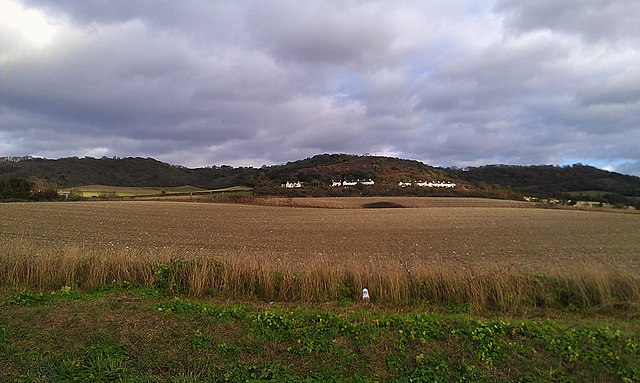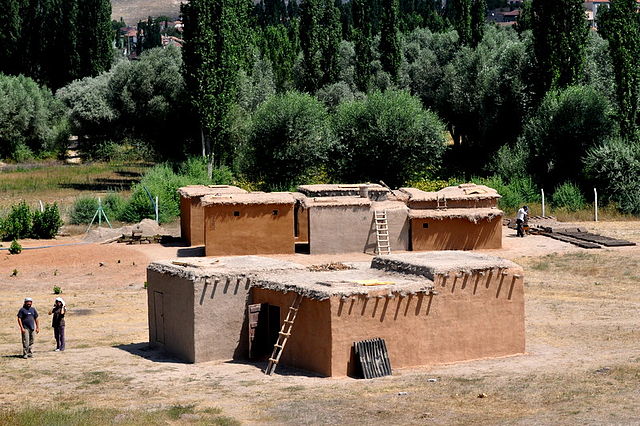A causewayed enclosure is a type of large prehistoric earthwork common to the early Neolithic in Europe. It is an enclosure marked out by ditches and banks, with a number of causeways crossing the ditches. More than 100 examples are recorded in France and 70 in Southern England and Wales, while further sites are known in Scandinavia, Belgium, Germany, Italy, Ireland and Slovakia.
Sketch of Whitehawk camp, a causewayed enclosure
Causewayed enclosure at Burham, Kent.
The Neolithic or New Stone Age is an archaeological period, the final division of the Stone Age in Europe, Asia and Africa. It saw the Neolithic Revolution, a wide-ranging set of developments that appear to have arisen independently in several parts of the world. This "Neolithic package" included the introduction of farming, domestication of animals, and change from a hunter-gatherer lifestyle to one of settlement. The term 'Neolithic' was coined by Sir John Lubbock in 1865 as a refinement of the three-age system.
Reconstruction of Pre-Pottery Neolithic B housing in Aşıklı Höyük, modern Turkey
Reconstruction of a Neolithic farmstead, Irish National Heritage Park. The Neolithic saw the invention of agriculture.
An array of Neolithic artifacts, including bracelets, axe heads, chisels, and polishing tools.
The Urfa Man c. 9000 BC. Şanlıurfa Archaeology and Mosaic Museum.






